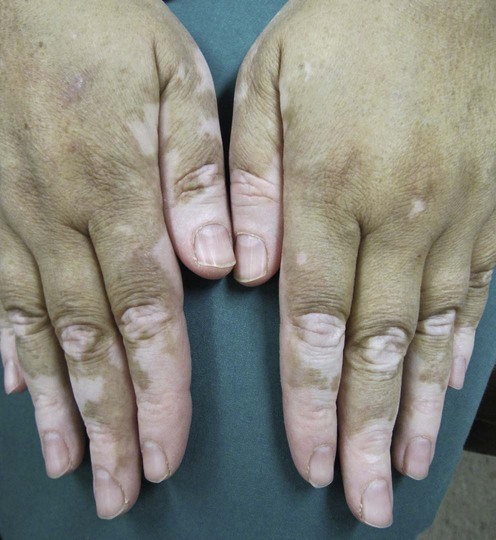 Topical corticosteroids Topical corticosteroids |
A |
 Topical photochemotherapy Topical photochemotherapy |
B |
 Systemic photochemotherapy Systemic photochemotherapy |
A |
 Narrowband UVB (NB-UVB) Narrowband UVB (NB-UVB) |
A |
 Narrowband UVB and oral antioxidants Narrowband UVB and oral antioxidants |
B |
 308 nm excimer laser 308 nm excimer laser |
B |
 Topical tacrolimus or pimecrolimus Topical tacrolimus or pimecrolimus |
B |
 Topical calcineurin antagonists plus 308 nm excimer laser Topical calcineurin antagonists plus 308 nm excimer laser |
A |
 Topical corticosteroids plus 308 nm excimer laser Topical corticosteroids plus 308 nm excimer laser |
A |
 Topical calcineurin antagonists plus NB-UVB Topical calcineurin antagonists plus NB-UVB |
A |
 Pimecrolimus 1% cream plus microdermabrasion Pimecrolimus 1% cream plus microdermabrasion |
A |
 Monochromatic excimer light Monochromatic excimer light |
B |
 Monochromatic excimer light plus tacrolimus Monochromatic excimer light plus tacrolimus |
A |
 Narrowband UVB microphototherapy Narrowband UVB microphototherapy |
B |


